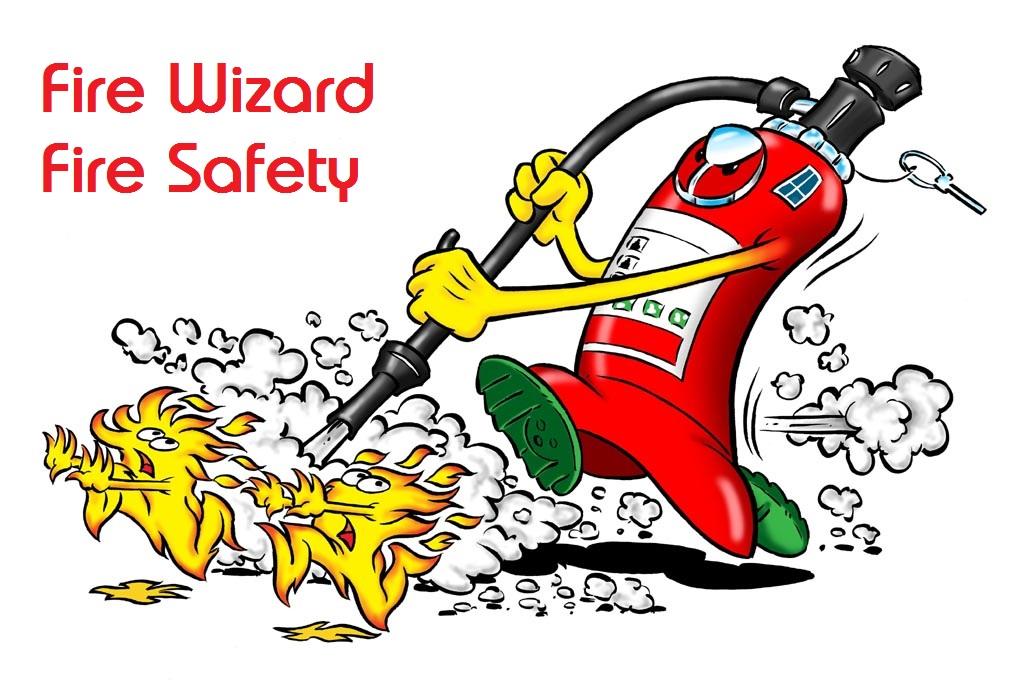-
Posts
2,570 -
Joined
-
Last visited
Everything posted by AnthonyB
-
Not necessarily (Your FRA should determine this) Many smaller fish & chip shops have such short travel distances there is no need for fire separation for life safety/compliance purposes and often have open doorways between the two areas. The only complication with these premises is if there is upstairs living accommodation accessed from inside the shop.
-
Many of the professional plan providers use CAD as there are existing libraries of fire protection related symbols to use with them.
-
Whilst pricey a water mist would be the best as you would only need one extinguisher to cover all risks - Class A (solids), Class F (cooking oils) and live electrical equipment instead of the traditional (more sales led) approach of a wet chemical extinguisher, CO2 extinguisher and fire blanket (If your fryers are bigger than 300mm diameter and/or contain more than 3l of oil then they are useless as that's the maximum size fire they are tested and approved for) https://www.safelincs.co.uk/ultrafire-water-mist-fire-extinguishers/
-
In theory anything is possible with risk assessment, but it goes against all the various guidance and standards. The problem is that if a premises is big enough to need an electrical fire alarm it must start off as a manual system, a principle going back well over 60 years, so you need manual call points - after all, humans make very good detectors which is why today in many types of building there is still no requirement for any detection (it's mostly there for property). If you have only the pt6 detectors and you find a fire in it's early stages before they sound (not improbable) you have no way of raising the alarm other than waiting until it grows enough to trigger the detector. And even then you will only alert the room that already knows there is a fire unless you have interlinked all the alarms - you see plenty of buildings with single station grade F smoke alarms (which are outright illegal in workplaces as they only have one power supply). If a shout or similar cannot be heard throughout the whole workplace then you need an electrical fire alarm system to BS5839-1 with manual call points and sounders and then layer on detection if required. I'll accept a grade D smoke alarm in a building (with an adequate part 1 system) if it's purely for an inner room situation or in buildings too small to need call points, but will still prefer a proper system in time. They often get put in by electricians and fit out teams that don't do much commercial stuff and don't really understand the rules & rationales and by responsible persons who also don't understand...
-
If you are still in an area when the smoke layer has formed sufficiently to obscure the signage then something has gone badly wrong with other fire safety provisions! Floor mounted signage does have a place and a variety of products exist for this.
-
Unless you've had a fire risk assessment you won't know what fire safety provisions you actually need (unless guided by the suppliers and installers which can often lead to over provision). It should be as soon as possible, however in practice if the premises don't present a risk of death or serious injury then your FRA being a couple of weeks after opening is unlikely to lead to any action.
-
Whilst (with good reason) the use of powder is frowned upon indoors in this situation,due to the use of accelerants and the resulting raging fire, the rapid knockdown and large mass for mass fire fighting capacity of powder is such it would be a worthy choice, but don't go lower than 1kg, ideally 2kg
-
Yes as less than 60 persons would be using it.
-
Sounds like a 'code hugger' quoting insurance requirements regardless of the real world, the sort that gives fire safety and H&S a bad name - from a risk assessment and life safety/legal compliance point of view it's not required.
-
The system is described here - as you see it's less combustible than wood: https://www.paroc.co.uk/knowhow/fire/fire-classification
-
A one room building with no relevant persons to protect most of the time, where the service penetration is to the outside and would safely vent in the event of fire? Unless there is an adjacent building or risk that would be affected by improper fire stopping in this case, which sounds extremely unlikely, then from a fire safety point of view you could fill it with chewing gum for all the difference it makes....
-
It's legal as long as it's managed such that all fastenings are removed when the premises are occupied. If this isn't happening it's an offence and management requires improvement or an alternative option considered
-
Strict interpretation of the signage rules is the use of an up arrow above the door as up is for straight on as well as up. When through the door you have another change of direction requiring another sign for the stairs (usually diagonal down & left, or down & right depending on how the stairs run)
-
Sounders have always needed to be in fire resistant cabling for a lot, lot longer than 20 years. This is a serious non conformance that affects life safety and must be remedied. Detection zones to call points and smoke/heat detectors have only required to be fire resistant since 2002 (although most good installers would use FP or Pyro anyway). This is because original conventional fire alarms would go into 'fire' when their cables were short circuited so a fire burning through cabling would still set the alarm off, which would continue to sound as the sounder circuits would be fire resistant. As long as the current panel is set to operate in 'short circuit = fire' mode (most modern panels default to 'short circuit = fault' mode and would need the setting changing) this is less of an issue unless the panel cannot be set for short circuit = fire So: Sounders in FR cabling - essential; detection zones in FR cabling - desirable
-

How often do we need to certify emergency lighting?
AnthonyB replied to a topic in Emergency Lighting
Size of premises has no bearing on applicability of legislation. Even a tent in a field if not used as a private dwelling is subject to fire safety legislation. If your fittings are genuine emergency lights (that will stay illuminated upon power failure using their internal batteries and can often be identified by their green LED light (which is illuminated under normal conditions to show the battery charger is on) then they require a suitable system of maintenance under the Fire Safety Order. The benchmark is in BS5266-1 where the fittings should be tested monthly for function (brief on/off test) and annual for duration (full 3 hours under battery). If the installation has been made by a competent person and in line with BS5266-1 then there will be secret key test switches that would allow you to carry out this testing. -

Flat fire door for private entrance
AnthonyB replied to Nibarb's topic in Fire Doors and Accessories
FD30s (smoke sealed). Why do you not have a smoke alarm. Unless it's a privately owner occupied flat that was built or converted before 1991 it should have one and if rented must. -

Boiler room fire door - is a door closer required?
AnthonyB replied to Tom Spearing's topic in Fire Doors and Accessories
If it's a cupboard you can fit it with a lock and sign it "fire door keep locked shut". No lock and you will need a self closer. -
Infrequently occupied cupboards designed to be kept locked shut don't have closers but rooms usually do, especially high risk rooms like laundries.
-
You can have a lot of glazing in doors and they still be fire doors, but you would have to specify this and get them from a suitable specialist provider. Off the shelf glazed doors from the usual retailers may be toughened for health & safety, but are very unlikely to be fire rated.
-
Unless that external door needs to be a fire door to protect an adjacent external escape route it doesn't need a self closer.
- 68 replies
-
- door closer
- fire door
-
(and 1 more)
Tagged with:
-
If you are in the common hallway and it's on fire (which it shouldn't be short of an aggressive arson attack using a lot of accelerant) you would evacuate, but if the block meets structural requirements it should be safe to stay put in your flat if needed.
-
This is a double post ,being asked in another section. I refer you to my answer there.
-
Check the fire risk assessment. Is this an exit at ground level to open air? Depending upon the location and distribution of the exits and any stairs and if the premises are stay put then there is a slight possibility the exit is for accommodation only and not required for escape - but I would want to see how they came to this decision.
-
If it's an internal fire exit from one internal area to another there is a good chance it's meant to be a fire door as well in which case it needs repairing/replacing and a new closer fitting. The final fire exit to open air doesn't usually need a closer as it's not a fire door unless protecting an adjacent external escape route.
-
The fact it's got it's own smoke control system suggests it is a non standard (not to Approved Document B) layout mitigated by a fire engineering approach. Layouts that are more open plan than the default approach of enclosed stairs and lobbies are not uncommon, usually using sprinklers and/or smoke control.

